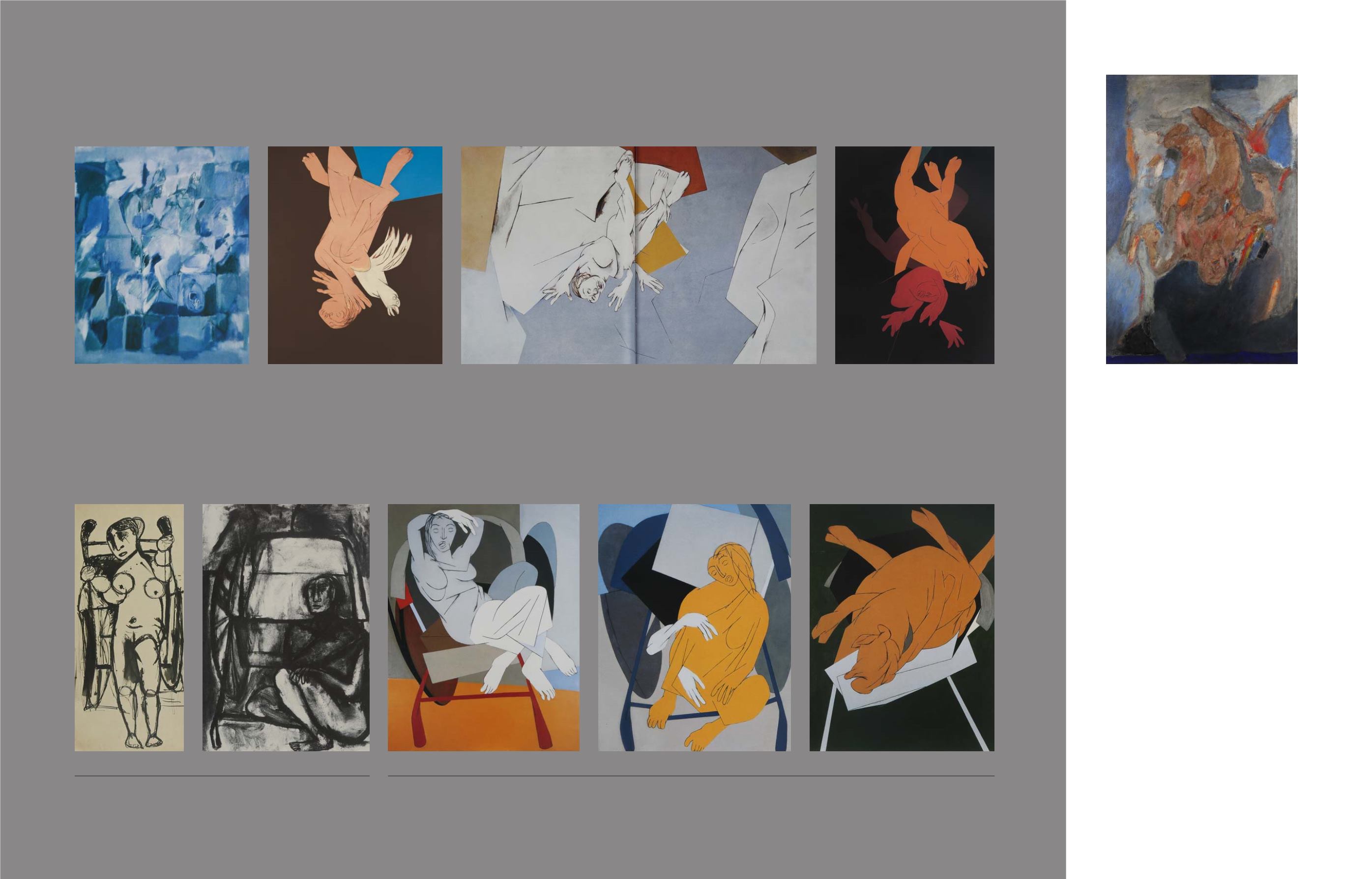

88
89
The present lot lies at the very beginning of
the journey during which Mehta developed
the vocabulary for expressing the anguish
and trauma of human suffering. This early
work combines the power and intensity of
the rickshaw puller and the falling figure, both
subjects which Mehta devoted a lifetime to
exploring in all their depth and nuance.
Falling Figure
, 1965
present lot
“The falling figure with its
animated, almost cinematic
movement, which allowed it
to retain a multiple, periscopic
effect [was] awarded with
the Gold medal in the first
national Triennale held in New
Delhi in 1968.” (Yashodhara
Dalmia,
Tyeb Mehta: Triumph
of Vision
, New Delhi: Vadehra
Art Gallery, 2011, p. 9)
Falling Figure
(diptych), 1991
Reproduced from Yashodhara Dalmia,
Tyeb Mehta: Triumph of
Vision
, New Delhi: Vadehra Art Gallery, 2011, pp. 20‒21
Bull on Rickshaw
, 1999
Falling Figure with Bird
, 1988
Saffronart, 19‒20 September 2012, lot 40
Reproduced from Ranjit Hoskote, Ramachandra Gandhi et al.,
Tyeb Mehta: Ideas
Images Exchanges
, Vadehra Art Gallery, New Delhi, 2005, pp. 139, 140 and 220
Rickshaw Puller
Figure with Rickshaw
, 1959
Figure on Rickshaw
, 1984
Figure on Rickshaw
, 1984
Falling Figure
, 1965‒66
Reproduced from Ranjit Hoskote, Ramachandra Gandhi et al.,
Tyeb Mehta: Ideas Images Exchanges
, Vadehra Art Gallery, New
Delhi, 2005, p. 74
EVOLUTION OF THE FALLING FIGURE
From the very early gestural brushstrokes to the precisely drawn lines of his later work, Mehta continued to focus on the
Falling Figure as a symbol for human suffering.
EVOLUTION OF THE RICKSHAW PULLER
From the early realistic sketches of the lone rickshaw puller to the inclusion of the bull or bird in flat colours and precise
delineation, Mehta’s art found new ways to represent the anguish of the human being in an existential struggle.
Falling Figure
, 2001
Reproduced from Ranjit Hoskote, Ramachandra
Gandhi et al.,
Tyeb Mehta: Ideas Images Exchanges
,
Vadehra Art Gallery, New Delhi, 2005, p. 228
Reproduced from Yashodhara Dalmia,
Tyeb Mehta: Triumph of Vision
, New Delhi: Vadehra Art Gallery,
2011, pp. 97 and 58


















